Normally on my technical blog here, i write on digital tech, specifically web and internet software development. However this week, i had to hack the car which belonged to my mom, who gave it up for use by my teenage son. Unfortunately, we went to the doctor with it, and after the appointment, the car wouldn’t start. Stranded. We walked home, then i later tried to jump start it, to no avail. The car in question is a 2002 Chevrolet Camaro Z28.
Now, when i came back to try and start it, i brought most of the tools i thought i would need to get it started: jumper cables, lithium battery to jump start, wrenches, screwdrivers, etc. Usually i drive Toyotas, i haven’t had a GM vehicle as a daily driver since 1989. The symptoms:
- Accessory/On power worked (indicator lights, power windows, radio, etc.)
- Turning the key to the start/crank position made no noise at all (only cut power to certain gauges, as normal). There was no starter cranking, there was no clicking of the solenoid
- The “security” light on the dash was slow blinking (unfortunately, i didn’t notice this until 24 hours later)
At first, i was operating on the assumption that there was a problem, with the battery, alternator, battery terminals/side posts, or possibly even the starter going bad (maybe try the hit with hammer technique). I replaced the side terminals for $6, but no difference. I also checked as many fuses as possible, and swapped relays, to no effect.
After searching the internet forums, and watching various YouTube videos, i was coming to the conclusion it could be that the security system was flaking out, and the car’s computer was refusing to allow the ignition sequence. Apparently the tell-tale sign was the slow blinking “security” indicator light on the dash. Under normal circumstances, it should illuminate when the key turns to “on”, then turn off a few seconds later.
These GM vehicles notable have an ignition key with a little metal pod in the center. They have to come from the dealer – if you duplicate the key at a regular hardware store, they won’t start the car even if the cylinder turns. That’s due to the VATS security system. The key looks like this:
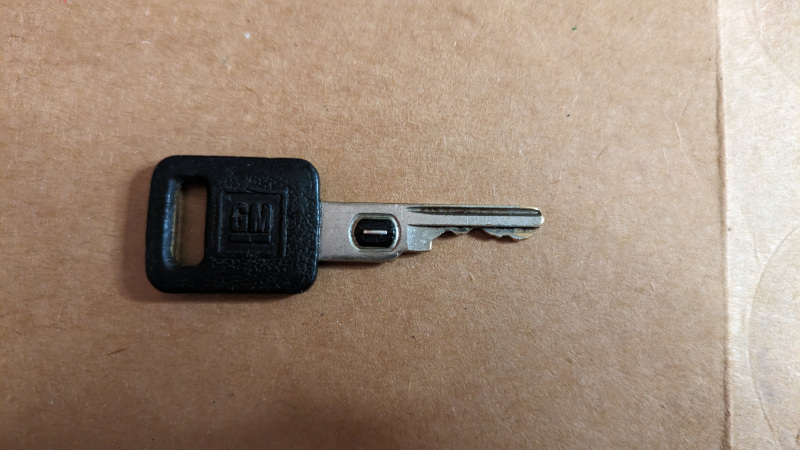
Apparently, the little piece of metal surrounded in plastic is a resistor of a certain level of ohms. So the car dealership would give you a key blank with the correct Ohms reading to match your vehicle.
I did try to do some sequences to reprogram the alarm system to the key, but they didn’t work (such as turning the key to on for 10 mins, off 5+ secs 3 times).
This video by DanielJaegerFilms explains there are 15 different resistance values. It also explains where to find the orange cable under the dash with a clip to other wires going to your car’s computer. I also watched another video by 810Camaro which had good visuals on where the cables are, and how to wire your own bypass with a resistor. So i decided that was my strategy to get the vehicle home w/o a tow truck.
I did use a multimeter to measure the resistance of my key. It did come close to one of the 15 values in the aforementioned video.
I also removed the kick panel under the drivers side dash to locate the orange cable w/clip, connected to another pair of white/gray wires. I think the orange goes to the interconnect in the steering column, where the other pair to the computer.
I ordered some resistors and alligator clips since there wasn’t anything local. But i just didn’t want to wait a couple days, so a vision literally spoke to me in a dream: use the second ignition key to be the resistor to bypass the security and start the vehicle!
I woke at 5 AM determined to do it. Here’s what i used with materials and tools on-hand:
- multimeter (measuring resistance in ohms)
- electrical cable (like for speaker wire or similar)
- brown paper bags (worked better than cardboard)
- vise grip (small is suitable, but i used a larger one)
- electrical wire twist connectors (worked better than the binder clips)
- wire cutter/stripper
- blade and screwdriver punch to make tiny holes in the brown paper insulation
- tape (i used gaffer tape)
- jumper cables or jumper battery pack, in case your battery is low

The theory of change: use the second key resistor, clamp it to a pair of wires, and wire it up to the unclipped clip to the computer. This should trick the computer into thinking the key is in the ignition with the proper electrical resistance, which will disable the security system, allowing the car to start.
The challenge is to get the pair of wires on both sides of the key, applying enough pressure to keep a decent electrical connection, while not touching the wires to any other part of the key. If the wires touch the other key parts, or if they touch the vise grips/clamp, the electrical resistance will be 0 ohms instead of the proper value (523 ohms, 1130 ohms, 4750 ohms , etc). Thus, my strategy was to use multiple layers of cardboard or brown paper to insulate those metal parts, then clamp both sides of the wires to the resistor with the vise grip. I could have used electrical tape, but i didn’t find it.
I tried with thin cardboard first, but my tests were too hard to get the electrical connection, so i switched to brown paper, which worked better.
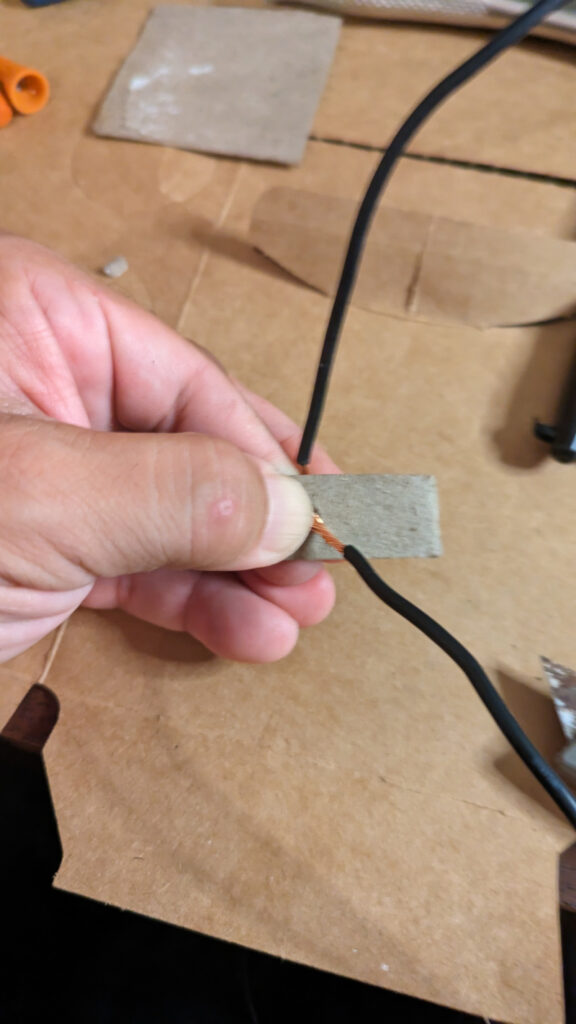

I cut tiny holes on each side of the key, for the electrical contact to come thru, without exposing the rest of the key.
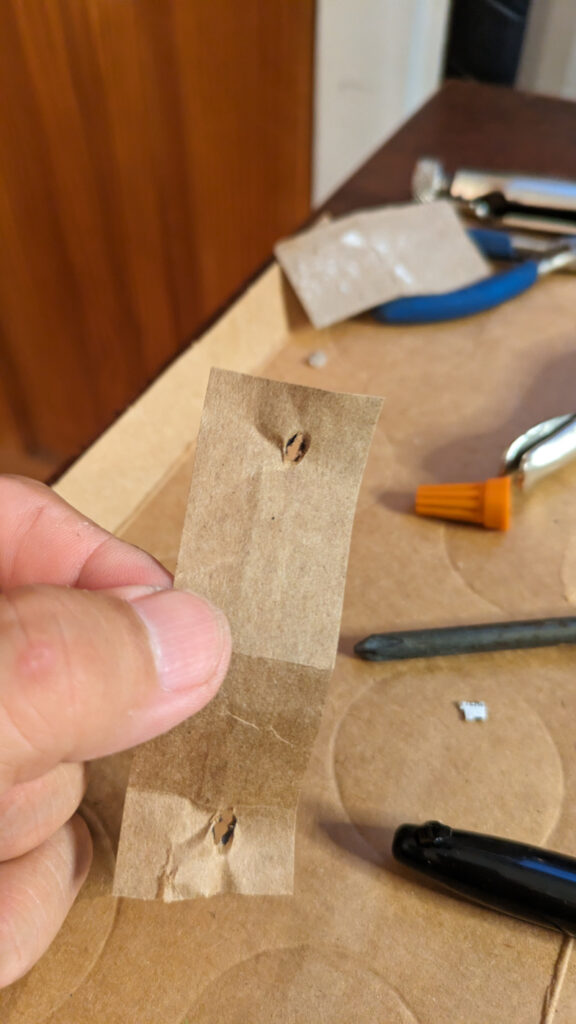

I put the stripped ends of both wires on each side of the key, cover with another paper for insulation against the vise grips, then clamp from each end with vise grips – gently. I don’t want to damage anything, just keep it in place.
The other ends of the wires are stripped, and i fastened them to the electrodes of the multimeter with the twist connectors. Alligator clips would work better. The multimeter i set to the thousandths setting for ohms.
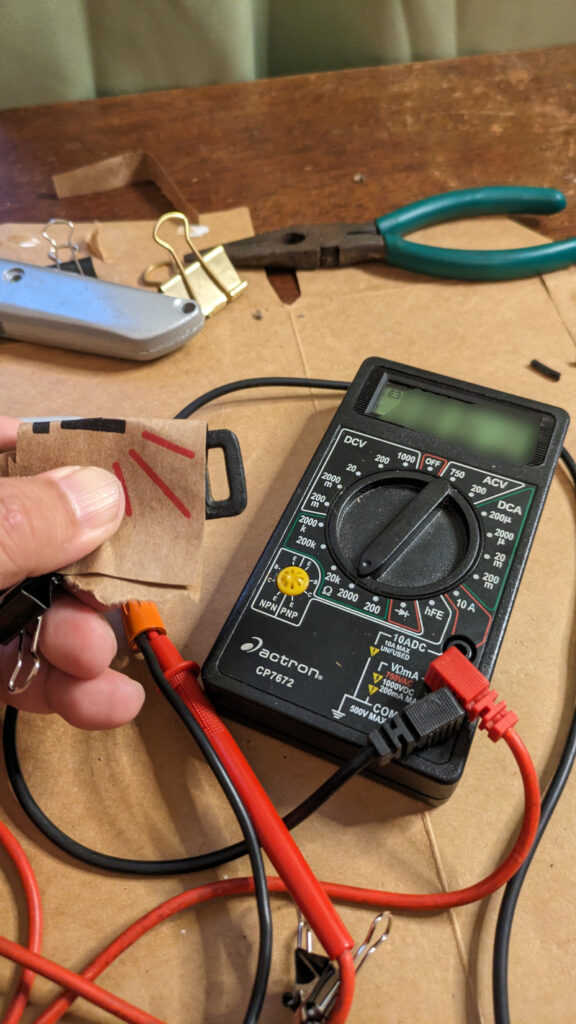
I had to adjust the wires, brown paper, and vise grip multiple times, until i got the proper resistance. It can’t be no connection, but also can’t be zero/0 resistance, which means the connection is bypassing the resistor. Once i got it stable, i knew i could go on-site to my car and try it.

Under the dash, i disconnected the wires at the clips. Although most other videos recommend cutting the wires from the clips (primarily to wire a resistor to it for a permanent bypass), i didn’t want to do that today. So instead, i took the other ends of the wires, put a tiny piece of cardboard in between the wires to insulate, and wrapped them with gaffers tape. My idea was to emulate the clip and shove it into the other 2-connector clip. Since i only needed it to work for a minute (to start the ignition), i felt it could work.

I had to re-clamp the side with the vise grip, but that was easy since i brought the multimeter, so i know when the connection is good. I shoved the other fake taped up clipped wires into the real clip (white/gray, not orange), and turned the ignition key to ON.
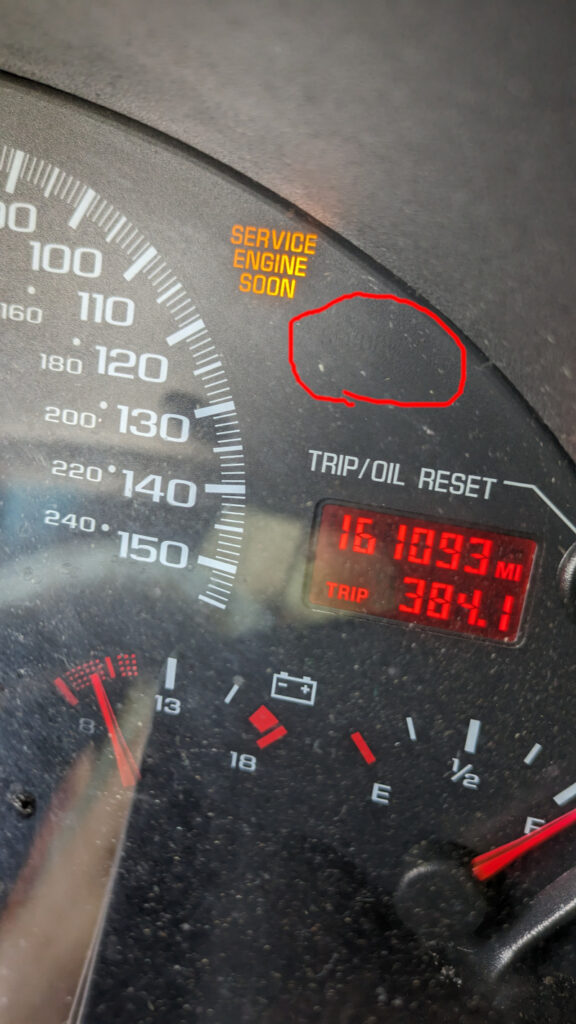
Notably, the SECURITY light turned off, and was not blinking. That means it is disabled, and the ignition will start. I turned the key, and i heard clicking, but it didn’t start. So i connected my Toyota’s battery to the Camaro’s w/jumper cables, and it started right up!
I drove it home right away without stopping the engine. Since i pulled the bypass cables out during driving, the SECURITY light illuminated solid while driving, but that wasn’t a problem as it only matters during startup.
Now the only think i have to do is wire up a semi-permanent bypass so it is drivable, and also decide whether to fix the system ($1000?). Maybe we’ll use “the club” or a brake lock.
Aloha
References:
